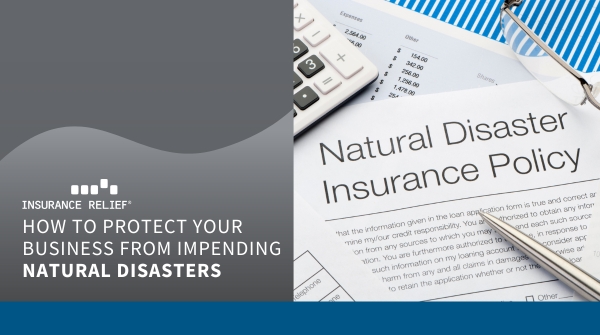How to Protect Your Business from Impending Natural Disasters

Protecting a business from natural disasters is crucial for ensuring its survival and minimizing potential losses. While it is impossible to control or prevent natural disasters, there are proactive steps that can be taken to safeguard the business and its assets. By implementing a comprehensive disaster preparedness plan, businesses can lessen the impact of natural disasters and recover more quickly. Here are some key measures to consider:
Risk Assessment
Begin by conducting a thorough risk assessment to identify potential natural disasters that could affect your business. This includes evaluating the geographical location, climate patterns, and history of disasters in the area. Understanding the specific risks will help you develop appropriate strategies.
Insurance Coverage
Review your insurance policies to ensure they adequately cover natural disasters. Consider additional coverage, such as flood insurance or earthquake insurance, depending on the risks prevalent in your region. Regularly update policies to reflect any changes in your business or assets.
Emergency Response Plan
Develop a detailed emergency response plan that outlines the actions to be taken before, during, and after a natural disaster. Designate emergency roles and responsibilities to key personnel, establish communication procedures, and conduct regular drills to test the plan’s effectiveness.
Data Backup and Recovery
Put a strong data backup system in place to safeguard critical business information. Store backups off-site or in the cloud to protect against physical damage. Regularly test data recovery processes to ensure they are functioning correctly.
Secure Infrastructure
Strengthen the physical infrastructure of your business. Reinforce buildings to withstand potential disasters, such as installing storm shutters, reinforcing roofs, and securing heavy equipment. Regularly inspect and maintain the premises to address any vulnerabilities.
Power Backup
Invest in backup power sources, such as generators or uninterruptible power supply (UPS) systems. These can provide temporary electricity during power outages, allowing essential operations to continue.
Supply Chain Management
Diversify your supply chain to minimize the impact of disruptions caused by natural disasters. Identify alternative suppliers and establish contingency plans to ensure a continuous flow of essential goods and services.
Employee Safety
Prioritize employee safety by training them on emergency procedures and evacuation plans. Conduct drills regularly to ensure everyone is familiar with the procedures. Establish a system for tracking employees during emergencies and accounting for their well-being.
Community Engagement
Engage with the local community and authorities to stay informed about disaster-related updates, alerts, and response efforts. Collaborate with neighboring businesses to share resources and support each other during recovery.
Business Continuity Plan
Develop a comprehensive business continuity plan that outlines steps to resume operations after a disaster. This includes identifying alternative workspaces, establishing communication channels, and prioritizing critical business functions.
If your company is looking for qualified, reliable insurance professionals, contact Insurance Relief today.
At Insurance Relief, we thoroughly evaluate and prioritize strong candidates so that you get only the best!



